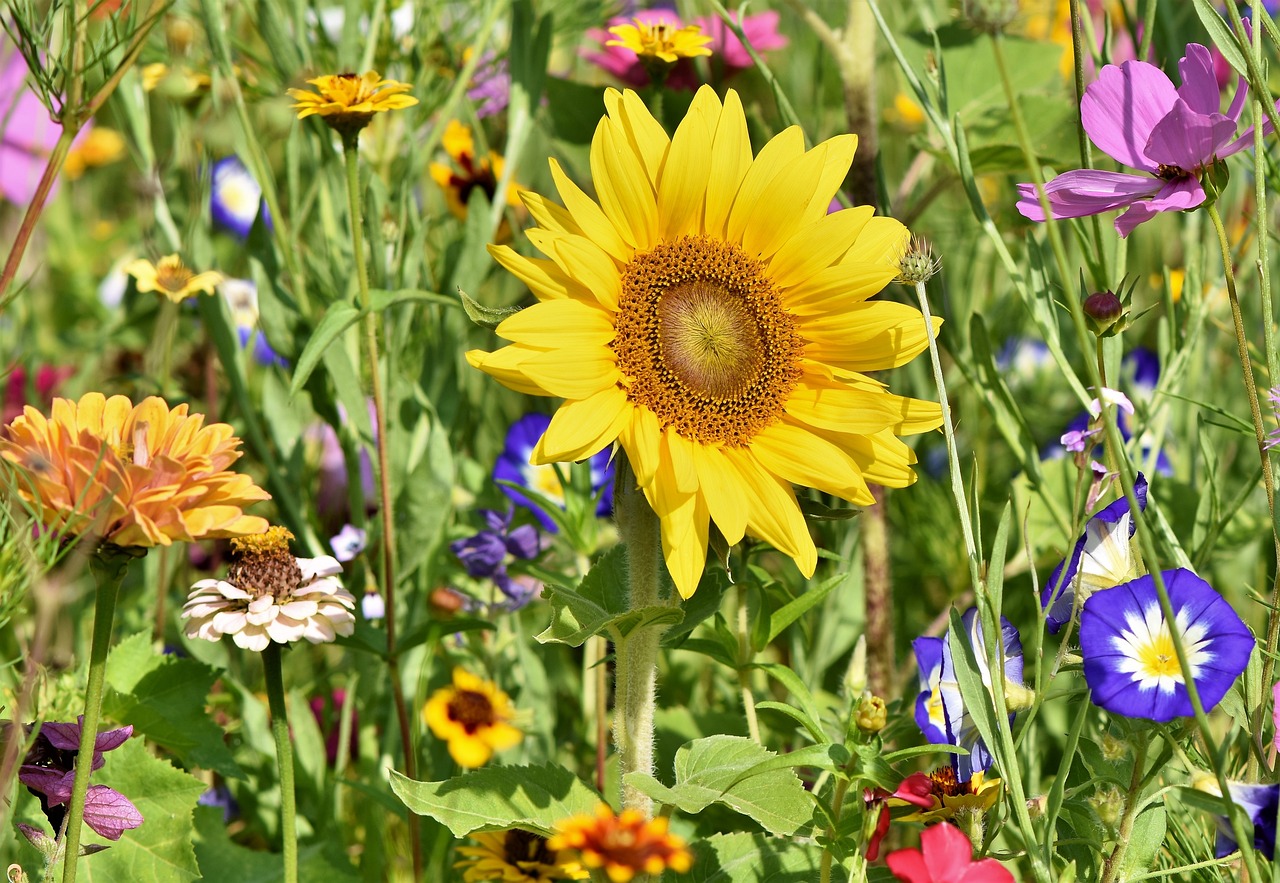
Creating a vibrant and bountiful cutflower garden is a delightful endeavor for any gardening enthusiast. If you reside in Zone 7, a region known for its moderate climate and diverse flora, you have a fantastic opportunity to cultivate a stunning array of flowers that can be cut and displayed in your home. In this article, we will explore the ten best flowers that thrive in Zone 7, offering beauty, fragrance, and longevity for your cutflower garden. Whether you’re a seasoned gardener or just starting out, these flowers will add charm and elegance to your home.
The 10 Best Cut Flowers to Grow for Zone 9 Cutflower Garden
Spring’s Delicate Delights
- Sweet Peas (Lathyrus odoratus): Delicate tendrils unfurl into fragrant blossoms boasting a vibrant color palette. These cool-weather bloomers, reaching up to 6 feet, add a touch of whimsy to early summer arrangements.
Tip: Sow seeds directly outdoors in early spring for a springtime display.
- Tulips (Tulipa): A symbol of springtime joy, tulips offer elegance and variety. From classic single blooms to fringed and double-flowered forms, these vibrant beauties come in a spectrum of colors, reaching heights of 8-24 inches.
Tip: Plant tulip bulbs in fall for a burst of color the following spring.
Summer’s Sizzling Stars
- Zinnias (Zinnia elegans): These low-maintenance annuals are sunshine personified. Boasting vibrant hues of orange, yellow, pink, and red, zinnias bloom profusely throughout the summer, reaching heights of 12-36 inches.
Tip: Deadhead regularly to encourage continuous blooming.
- Sunflowers (Helianthus annuus): These cheerful giants, reaching up to 12 feet, add a touch of rustic charm to summer bouquets. Choose from single or double-headed varieties in classic yellow or explore unique bicolored options.
Tip: Stake tall varieties to prevent them from toppling over.
- Cosmos (Cosmos bipinnatus): With their feathery foliage and daisy-like blooms, cosmos bring a whimsical touch to summer arrangements. Available in various colors, these easy-care annuals reach heights of 1-3 feet and bloom continuously throughout the season.
Tip: Deadhead regularly to promote continuous flowering.
Fall’s Farewell Flourishes
- Celosia (Celosia argentea var. cristata): Also known as cockscomb, celosia offers unique, textured blooms in shades of red, orange, yellow, and pink. These heat-tolerant annuals, reaching 1-2 feet, add an eye-catching element to fall bouquets.
Tip: Pinch back stems regularly to encourage bushier growth.
- Asters (Symphyotrichum): These late-blooming perennials come in a diverse range of colors and sizes, offering a final flourish to your garden. Asters reach heights of 1-6 feet and are perfect for adding pops of color and texture to autumn arrangements.
Tip: Deadhead spent blooms to encourage new flower formation.
8. Marigolds (Tagetes spp.)
Marigolds are known for their vibrant orange and yellow hues, which bring warmth and radiance to any floral display. These hardy flowers are easy to grow and require minimal maintenance. Their cheerful blooms also have a natural pest-repellent property, making them a beneficial addition to any garden.
9. Lantanas (Lantana camara)
Lantanas are a popular choice for Zone 9 cutflower gardens due to their heat tolerance and long-lasting blooms. These vibrant flowers come in a range of colors, including shades of red, orange, yellow, and pink. They are also known for attracting pollinators and adding a delightful fragrance to your garden.
10. Gladiolus (Gladiolus spp.)
Gladiolus, also known as sword lilies, are known for their tall spikes of colorful flowers. They make a striking addition to any cutflower arrangement and come in a wide range of hues. Plant them in well-drained soil and enjoy their majestic presence in your Zone 9 garden.
Beyond the Blooms: Tips for a Thriving Cut-Flower Garden (h2)
- Location, Location, Location: Choose a sunny spot with well-drained soil for optimal flower production. Amending your soil with compost will provide essential nutrients for your blooms.
- Succession Planting: Stagger your plantings throughout the season to ensure a continuous supply of flowers from spring to fall.
- Cutting with Care: Use sharp pruners or shears to cut stems at a diagonal angle, just below a node. Cut flowers early in the morning, after the dew has dried, for the longest vase life.
